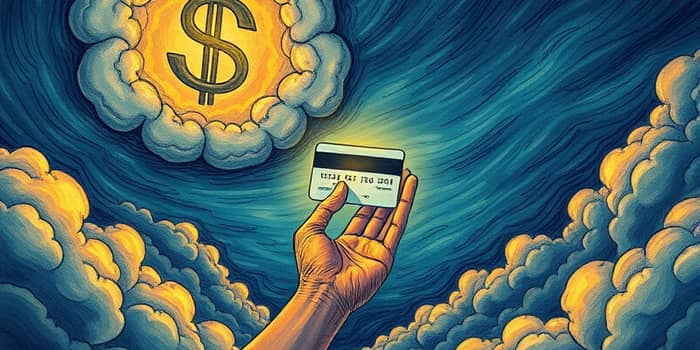
In today’s unpredictable economy, emergencies can strike when least expected. Whether facing a sudden medical bill, urgent home repair, or car breakdown, having a plan to cover costs is essential. While building an emergency fund remains the ideal solution, credit cards often serve as a crucial backup. This article explores practical strategies, risks, and expert advice to help you use plastic responsibly when unexpected costs arise.
Credit cards offer unique advantages when cash or savings fall short. Their universal acceptance by service providers makes them a go-to payment method for airlines, hotels, and online merchants. Report unauthorized activity quickly, and you limit liability for unauthorized charges to as little as $50 under federal law. Moreover, a timely repayment can build a stronger credit profile, paving the way for lower borrowing costs in the future.
Yet many Americans lack sufficient liquid savings. Recent surveys reveal only 41% could cover a $1,000 emergency from savings alone—the lowest level since 2021. Millennials are especially vulnerable: 34% report zero emergency savings. With financial uncertainty on the rise, credit cards bridge gaps that checking accounts cannot.
Generational habits significantly influence emergency funding choices. Older adults tend to rely on savings, while younger groups lean heavily on credit. The table below highlights these trends:
This generational divide stems from differences in financial education, employment stability, and existing debt loads. Younger adults, often saddled with student loans and lower savings, view credit cards as a practical stopgap.
Several factors make credit cards appealing for urgent needs. First, they provide convenience and safety compared to cash, especially for large or unexpected bills. You can access funds instantly, without withdrawing limited bank balances. Secondly, many cards include purchase protection and extended warranties—valuable when you can’t afford a backup plan. Finally, qualifying for a credit card often requires less stringent approval criteria than personal loans, granting quicker access to funds.
Despite these benefits, it’s crucial to recognize that credit should serve as a temporary solution. If you carry a balance beyond the grace period, high APRs can quickly inflate your debt. Data shows 33% of U.S. adults hold more credit card debt than emergency savings, underscoring the danger of prolonged reliance without repayment strategies.
When used without caution, credit cards can drive a vicious cycle of debt. High interest rates mean that a simple $1,000 charge could grow to $1,200 or more in interest within a year if only minimum payments are made. Furthermore, maintaining a large open balance boosts your credit utilization ratio, harming your score. In fact, high credit utilization harms scores, reducing your buying power for future needs.
Overdependence on credit also diverts resources from building a true emergency fund, leading to ongoing financial stress. Rewards programs may tempt you to spend, but redemption values often drop when you opt for statement credits. In emergencies, the immediate benefit outweighs long-term perks, but always weigh rewards against potential debt accumulation.
To harness credit cards effectively during a crisis, follow these guidelines:
By proactively managing your card, you convert a potential liability into a valuable financial tool.
While credit cards offer flexibility, they shouldn’t be your sole backup. Explore these other options:
Selecting the right card can make a significant difference in your financial outcome. Compare these factors carefully:
Additionally, be aware of special-purpose cards like medical financing solutions, which can ease large healthcare expenses but may carry deferred-interest clauses.
In the face of financial uncertainty, having a weaponized credit card—armed with low rates, clear terms, and a solid repayment strategy—can bridge critical gaps. Yet nothing replaces the peace of mind offered by a robust emergency fund. Aim to cultivate both savings and sensible credit habits to weather any storm with confidence and resilience.
References













